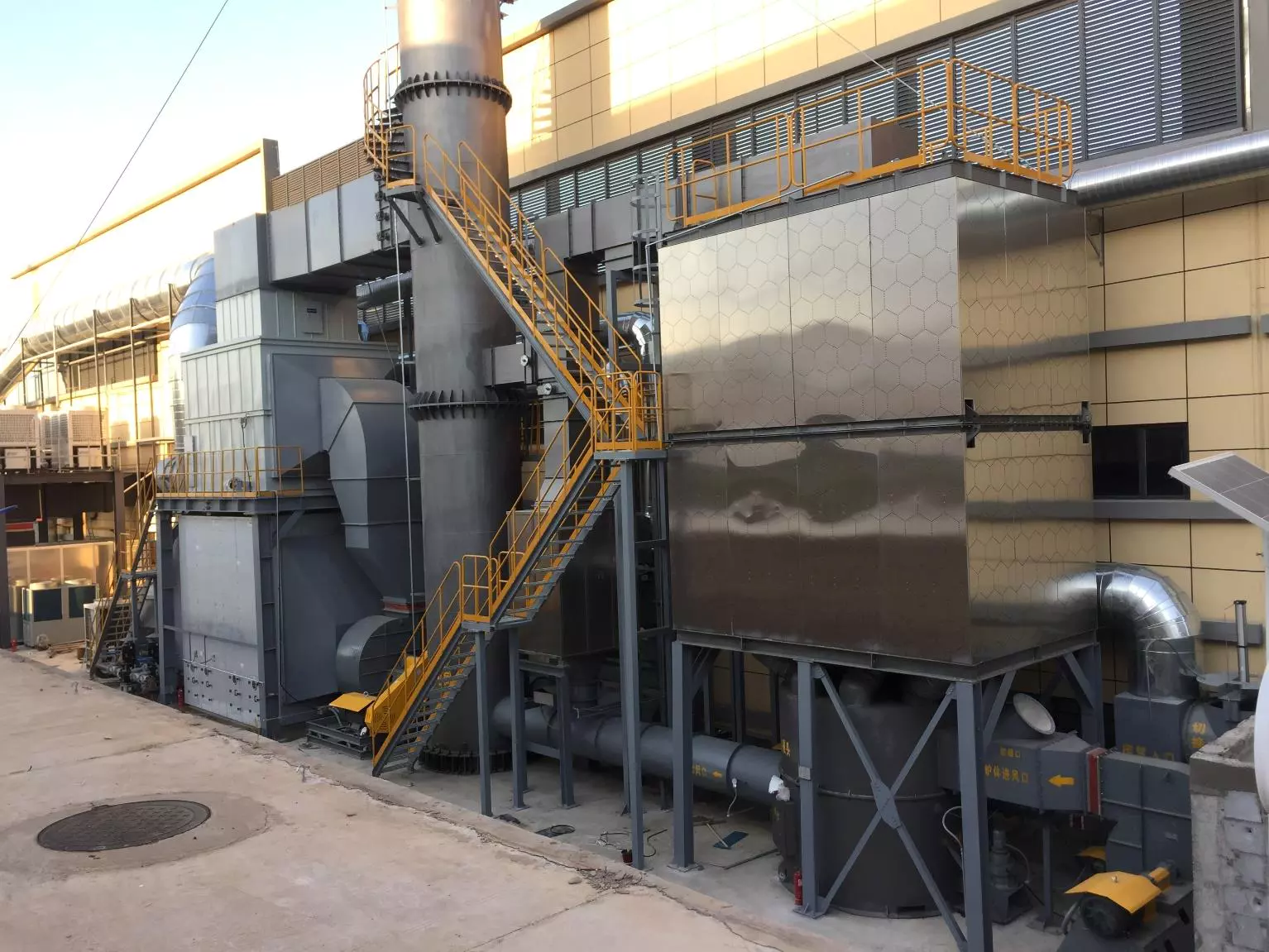How to reduce energy consumption in an RTO thermal oxidizer?
Regenerative Thermal Oxidizer (RTO) is a widely used air pollution control technology that is highly efficient in destroying volatile organic compounds (VOCs) and hazardous air pollutants (HAPs). However, the energy consumption of RTOs is relatively high due to the high temperatures required for the oxidation process. In this blog post, we will discuss several ways to reduce the energy consumption of RTO tepelné okysličovadlo
s.
1. Optimize the RTO design
- Use a counter-current flow design to maximize thermal efficiency and minimize energy consumption.
- Increase the size of the heat exchange media to increase heat recovery efficiency.
- Use an insulated housing to reduce heat loss and improve energy efficiency.
Proper RTO design optimization can lead to significant energy savings while maintaining high destruction efficiency.
2. Use a high-efficiency burner
The burner is the most energy-intensive component of an RTO thermal oxidizer. Using a high-efficiency burner can significantly reduce energy consumption. High-efficiency burners have a better combustion efficiency and can achieve a complete combustion of VOCs and HAPs at lower temperatures, resulting in less fuel consumption.
3. Implement a heat recovery system
A heat recovery system can capture the heat generated by the RTO and use it to preheat the incoming process air or water. This can significantly reduce the energy required to heat the process air or water, resulting in substantial energy savings.

4. Minimize air leaks
Air leaks in an RTO can cause the system to consume more energy than necessary. Regular maintenance and inspection can help identify and repair air leaks, reducing energy consumption and operating costs.
5. Optimize the control system
Optimizing the control system of an RTO can help reduce energy consumption by ensuring that the system only operates when necessary. This can be achieved by using sensors to monitor the VOC concentration levels and adjusting the operating parameters accordingly.
Conclusion
In conclusion, energy consumption is a significant concern for RTO thermal oxidizers. Implementing the measures mentioned above can help reduce energy consumption and operating costs without compromising the system’s effectiveness in destroying VOCs and HAPs. Proper RTO design optimization, using high-efficiency burners, implementing a heat recovery system, minimizing air leaks, and optimizing the control system can all contribute to significant energy savings.
Company Introduction
We are a high-tech manufacturing enterprise specializing in the comprehensive treatment of volatile organic compounds (VOCs) exhaust gas and carbon reduction energy-saving technology. Our core technologies include heat energy, combustion, sealing, and automatic control. We have the capabilities for temperature field simulation, air flow field simulation modeling, ceramic heat storage material performance, molecular sieve adsorbent material selection, and VOCs high-temperature incineration oxidation testing.
Our advantages lie in our RTO technology research and development center and waste gas carbon reduction engineering technology center in Xi’an, as well as our 30,000m2 production base in Yangling. We are a leading manufacturer in global RTO equipment and molecular sieve rotary wheel equipment. Our core technical team comes from the Aerospace Liquid Rocket Engine Research Institute (Aerospace Sixth Institute). With over 360 employees, including more than 60 R&D technical backbones, we have three senior engineers with researcher-level qualifications, six senior engineers, and 42 thermodynamics doctors.
Core Products
Our core products include the Rotary Valve Thermal Oxidizer (RTO) and molecular sieve adsorption concentration rotary wheel. Combined with our expertise in environmental protection and thermal energy system engineering, we provide customers with comprehensive solutions for industrial exhaust gas treatment, carbon reduction, and thermal energy utilization under various operating conditions.

Certifications, Patents, and Honors
- Certifikace systému správy duševního vlastnictví
- Certifikace systému managementu jakosti
- Certifikace systému environmentálního managementu
- Construction Industry Enterprise Qualification
- High-tech Enterprise
- Patent for Rotary Valve Thermal Oxidizer
- Patent for Rotary Wheel Heat Storage Incineration Equipment
- Patent for Disc Molecular Sieve Rotary Wheel
Choosing the Right RTO Equipment
- Determine Exhaust Gas Characteristics
- Understand Local Regulatory Emission Standards
- Evaluate Energy Efficiency
- Consider Operation and Maintenance
- Budget and Cost Analysis
- Select the Appropriate RTO Type
- Environmental and Safety Considerations
- Performance Testing and Verification
Understanding the composition and concentration of the exhaust gas is crucial in selecting the appropriate RTO equipment. This information helps in designing the necessary treatment processes.
Familiarize yourself with the emission standards set by local regulations to ensure compliance and avoid penalties. This knowledge aids in selecting an RTO system that meets the required emission limits.
Assessing the energy efficiency of different RTO systems is important to minimize energy consumption and operational costs. Compare the energy-saving features and performance of various models.
Take into account the ease of operation and maintenance when choosing an RTO system. Opt for a model that is user-friendly and requires minimal regular maintenance.
Perform a thorough budget and cost analysis to determine the affordability of different RTO options. Consider capital costs, operating expenses, and potential return on investment.
Based on the specific requirements of your industrial processes and exhaust gas characteristics, select the most suitable RTO type, such as regenerative, recuperative, or catalytic.
Ensure that the chosen RTO system adheres to environmental and safety regulations. Evaluate its ability to handle potential hazardous substances and ensure proper emission control.
Before finalizing the selection, conduct performance testing and verification to ensure that the chosen RTO system meets the desired treatment efficiency and emission reduction targets.

Service Process
- Consultation and Evaluation
- Design and Solution Development
- Production and Manufacturing
- Installation and Commissioning
- After-Sales Support
Initiate initial consultation, conduct on-site inspections, and analyze customer requirements.
Create customized designs, perform simulation and modeling, and carry out solution evaluations.
Manufacture tailored products, ensure quality control, and conduct factory testing.
Provide on-site installation, commissioning services, and operational training.
Offer regular maintenance, technical support, and spare parts supply.
We are a one-stop solution provider with a professional team dedicated to tailor-made RTO solutions for our customers.
Autor: Miya
